7 Must See Places (and 1 Must Not) in Cordoba: With Travel Tricks and History

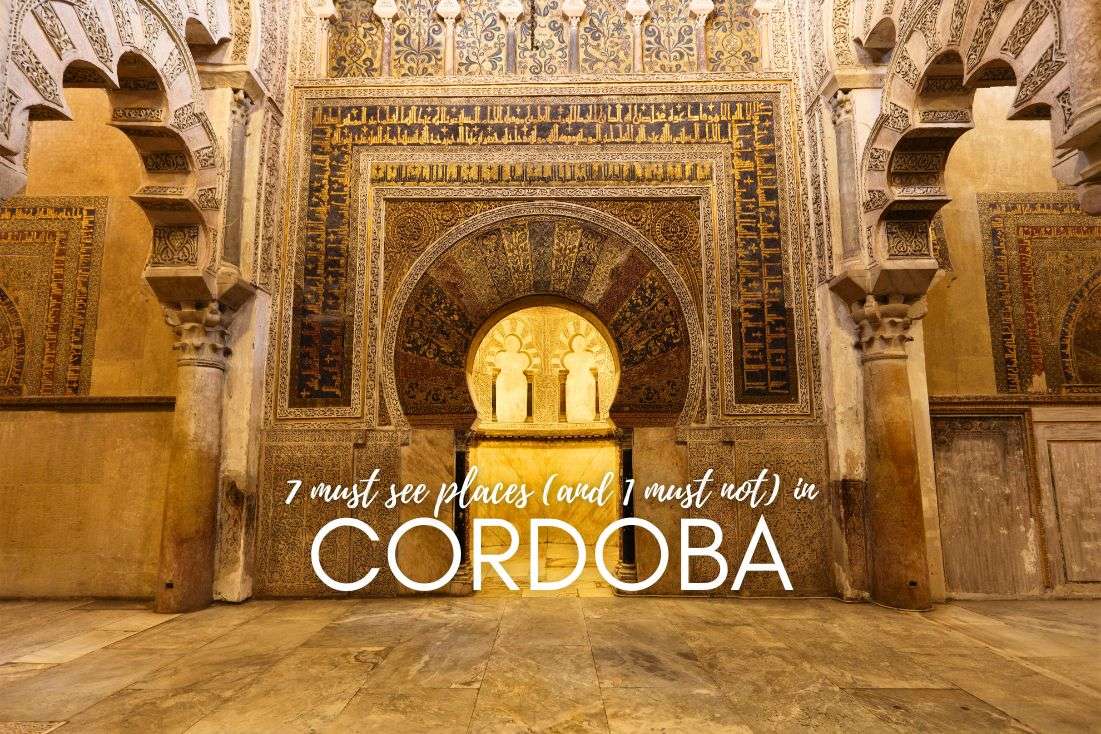
Cordoba, the city of courtyards and a mosque-cathedral, used to be the most advanced city in Europe and the capital of Muslim Spain. As the city with the most UNESCO sites in the world, you’d think it would be on top of my list for places to visit in Spain. But it’s not.
Andalusia is a very awe-inspiring region of Spain, so when traveling from place to place, you develop high expectations. But “Amaze me at once!” (imagine exclaiming this with a puffed chest and a finger raised to the sky like a spoiled prince) is not a request every single spot will be able to deal with. Even with a mosque-cathedral hybrid.
Cordoba fell victim to my expectations, a little bit like Ronda. Both ended up on my “meh” list. That being said, meh is not a category that means it sucks. It just means you can’t go around Andalusia wanting your jaw to drop on every corner (note to self).
You might also be interested in reading:
- Andalusia Itinerary: Southern Spain in 10 Days
- Barcelona Itinerary: 5 days in Gaudí’s Metropole (with day trips)
- All You Need to Know about Spanish Tapas (+Restaurant Tips)
- The 10 Best Museums in Spain’s Top Cities
- The 16 Most Beautiful Beaches in Spain
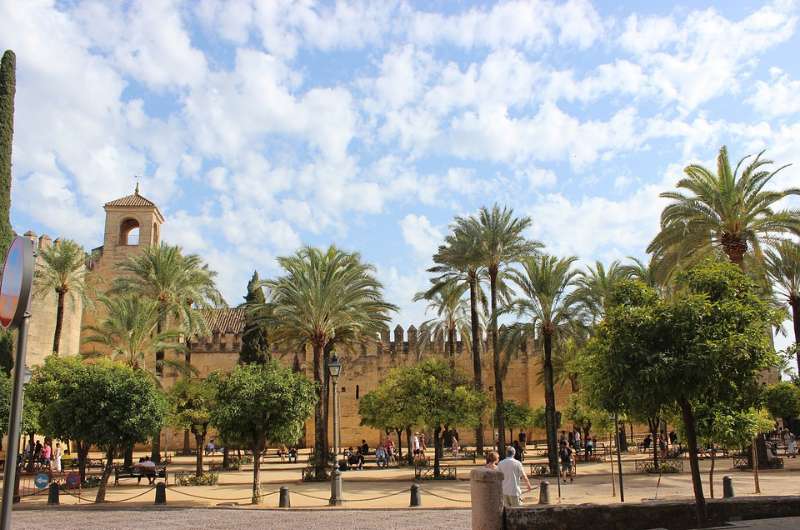
Walking towards the Alcazar
The best way to make the most of any destination is to read up on it, understand where it’s coming from and look at it with your newly informed eyes. So let’s take a look at Cordoba with a huge imaginary magnifying glass, shall we?
Hotel tip: The Hotel Suite Generis is a modern, adults only hotel with an extraordinary design. I dare you to find a right angle!
Getting to Cordoba
If you’re like us, you’ll be driving a rental car around Andalusia, which is the most comfortable and effective way to travel. No schedules, no waiting, no millennials sharing their hostel stories way too loud five rows over. Plus, the roads in Andalusia are awesome, there are wide, good quality roads connecting even small towns, it’s great.
From Malaga and Sevilla, the trip to Cordoba takes about 1 hour and 45 minutes.
If you prefer, Cordoba is on the high speed train route as well.
How much time in Cordoba
Half a day sound too short? The Mosque-Cathedral is arguably the only real highlight of Cordoba and I don’t think anyone spends more than an hour there. If you do like the Spanish do and take a siesta and 5 hours for dinner, you can stretch your stay to a couple of days max. Stay in one of the hotels in the old town for best access to the sites.
What to see in Cordoba
First, let’s get our bearings with a little map of the city center. I’ve starred all the places that I talk about below.
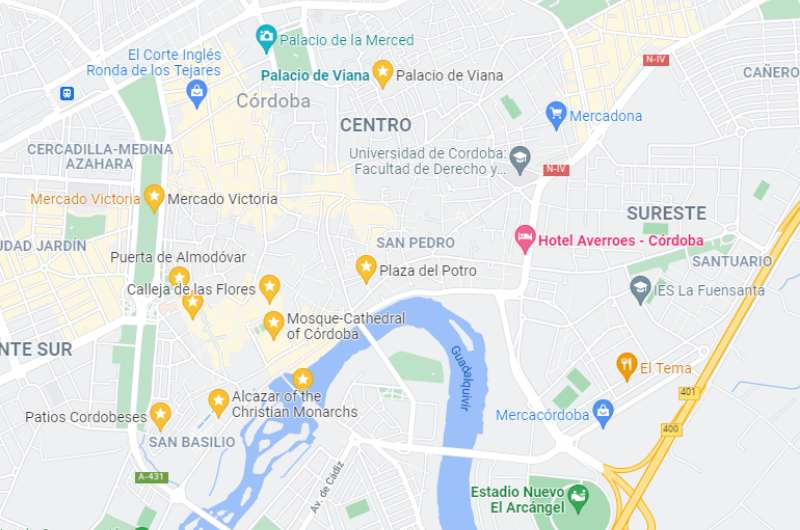
All of Cordoba's highlights
These are the top places to see in Cordoba with commentary based on our personal experience:
1. Medina Azahara ruins
If you are into history or plan too much time in Cordoba and run out of things to do, drive 10 minutes west out of city to the ruins of Medina Azahara. This is Cordoba’s most recent UNESCO site, added to the list in 2018.
The city of Azahara was built by the Muslims in the 10th century and only inhabited for about 80 years. What’s left of it gives you a good idea of what a settlement would’ve looked like back then, with road and bridge remnants visible as well as buildings. Unfortunately, there is a lot of archeology and restoration work still going on, so many of the areas are sectioned off and cannot be visited. You can just stare longingly, but that’s about it. Still, what you can walk through is interesting.
When driving from Cordoba, the sign you are looking for says Madinat al-Zahra. You drive to the visitor’s center that is about 1.2 miles (2 km) from the actual site. Parking is easy and free at the parking lot. From there, you have to take a shuttle bus to the site. It leaves every 20 or so minutes. You can’t drive your own car all the way there.
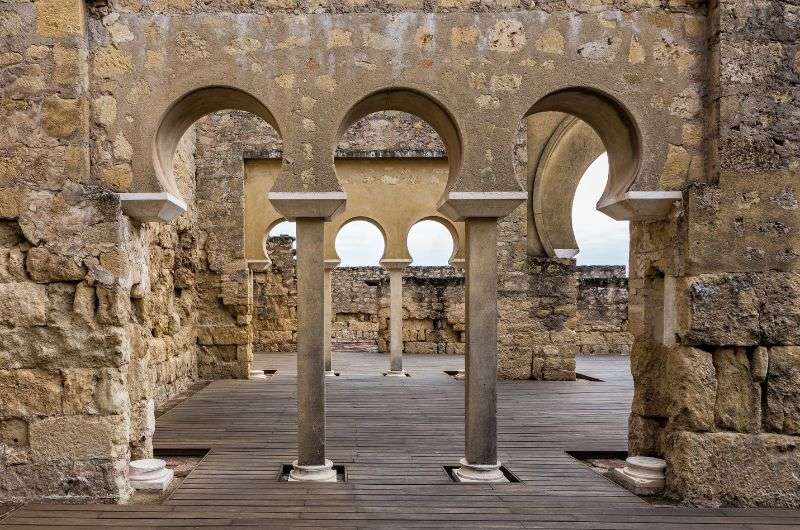
The ruins of Medina Azahara
Stop by the visitor’s center first and take a look around the mini museum and learn a little about what you are about to see. When you are ready, hop on a shuttle bus. There are information panels at the actual site as well, though the information isn’t really detailed. Plan to spend 1.5 hours there. It’s nice. Certainly not something you can’t live without, but interesting nonetheless.
- Ctra. Palma del Río, 4P, 14005 Córdoba
- Closed on Mondays. Sundays 9am—3pm. Tuesday to Saturday open from 9am and closes anywhere between 3pm and 9pm depending on time of year (with longest opening times in the summer). Check times here.
- Tickets are free for EU citizens and €1.50 for all you other folks. Shuttle bus costs €2.50, guided tour is €20.
2. Judería, the Jewish Quarter
Before we tell you about the Old Town, let’s talk about the Jewish Quarter. If you like narrow alleys, it’ll be right up your alley! See what I did there?
It’s located to the northwest of the Mesquita (Mosque-Cathedral), just a few streets away from it. The cobblestone here is incredible, it’s made out of round pebbles from the river and sometimes in really fun patterns. I would not want to be the one paving the road with these little rocks! It must’ve taken ages. You’ll find this type of paving all over Cordoba, it just really stuck out to me in Judería.
The quarter has a traditional layout with two main streets intersecting each other, and a bunch of smaller alleys surrounding them, often being dead-ends. The streets here are full of souvenir shops and restaurants. The synagogue is free to visit, though it’s only one small room and will take you about 30 seconds to see.
Each city has an area that is good for a random wander, and in Cordoba, you can head here. Or, you can stay at Las Casas de la Judería de Córdoba, a wonderful hotel in a historical building in the Jewish quarter, and stay in the midst of it all.
3. The Roman Bridge
The Puente Romano, also known locally as the Old Bridge, is a 820 foot (250 m) long pedestrianized bridge and you can, um, walk across it and then walk back. Still, it’s still quite impressive, especially in the evening when it is lit up.
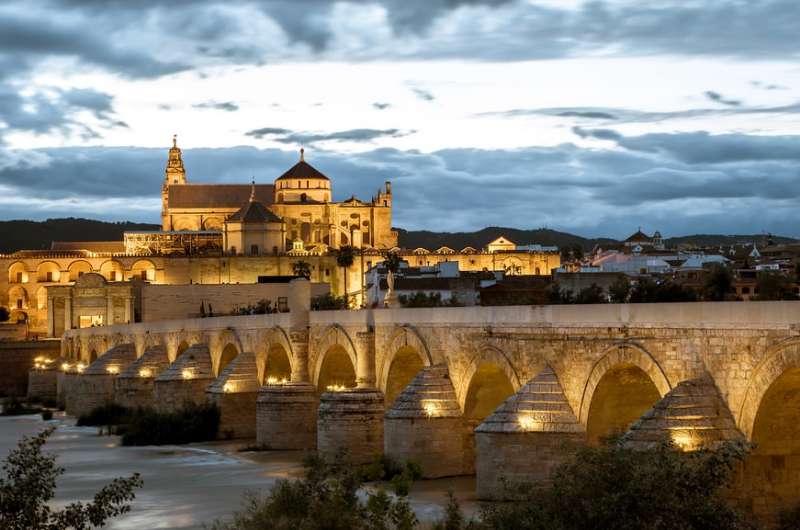
The famous Roman Bridge in Córdoba
The Romans built it in the 1st century BCE. It has 16 arches and is sturdy if you ask my professional opinion. The abutments are big. Therefore, it is a good bridge.
Even though it is technically a bridge that the Romans built, most of what you can see today is the work of the Arabs in the 8th century when they reconstructed it. Another big renovation came in the 10th century. Only the 14th and 15th arches are still the original.
Located close to the Mesquita.
4. Mercado Victoria
Yes, I am recommending that you visit a market. You do get hungry, right?
Victoria is a gourmet market, a sort of hip, modern take on a market. You probably won’t be buying fruit and veg, but you for sure will enjoy the restaurants and cafes there. You can basically come here to experience great food not only from many of Spain’s regions, but also international. Don’t expect anything shabby, the stalls and restaurants here are very nice.
The building dates back to 1877 and was the oldest at the Cordoba fair that used to be held here.
It doesn’t hurt that the pavillion is on a long stretch of grass in a park, so you can also sit outside in nice surroundings. Even some of the indoor establishments have large roof panels that open or at least are transparent to give the pavilion a lot of natural light.
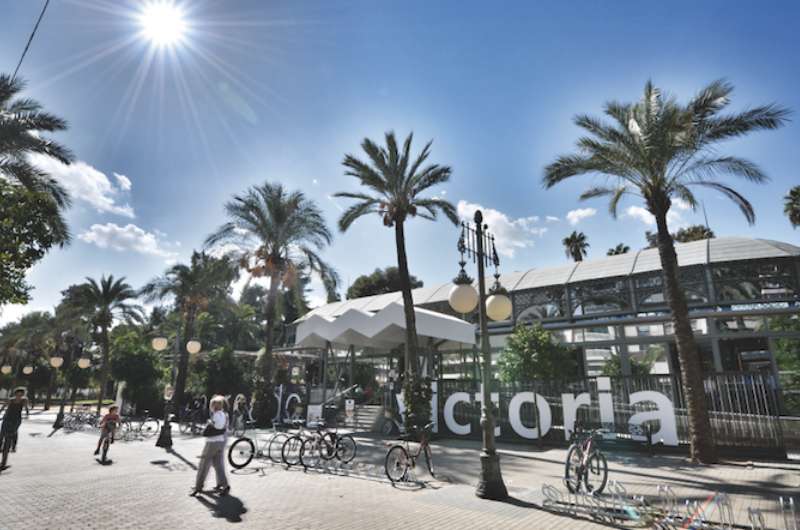
You have to visit Mercado Victoria
A meal that is typical for Cordoba is called salmorejo, a cold tomato soup. Get your tasting of the dish at a place called La Salmoreteca. They do traditional and funky variants and the ones we tried were pretty fantastic.
- Paseo de la Victoria 3
- June 15 to September 15: Sunday to Thursday 12pm—1am, Friday and Saturday 12pm—2am. September 15 to June 15: Sunday to Thursday 10am—12am, Friday and Saturday 10am—2am.
Our Top Tips for Cordoba:
- Top highlight: Mosque–Cathedral of Córdoba
- Best place to eat: Mercado Victoria
- What they don’t tell you: Register before visiting the Alcazar
5. Cordoba’s patios
Note that patios actually means courtyards in Cordoba. You’ve probably noticed that Spaniards are obsessed with cute little courtyards, and Cordoba has made a name for itself in the courtyard world (if that’s even a thing). I’ll attribute that to the Moors, who are certainly masters of courtyards, just check out their palaces.
The annual Festival of the Patios takes place in the first two weeks of May and during this time, all participating courtyards are open to the public and free to visit. And crowded!
Hotel tip: For your very own patio, stay at the wonderfully Spanish Hotel Boutique Patio del Posadero. The breakfast is incredible, and they have a pool!
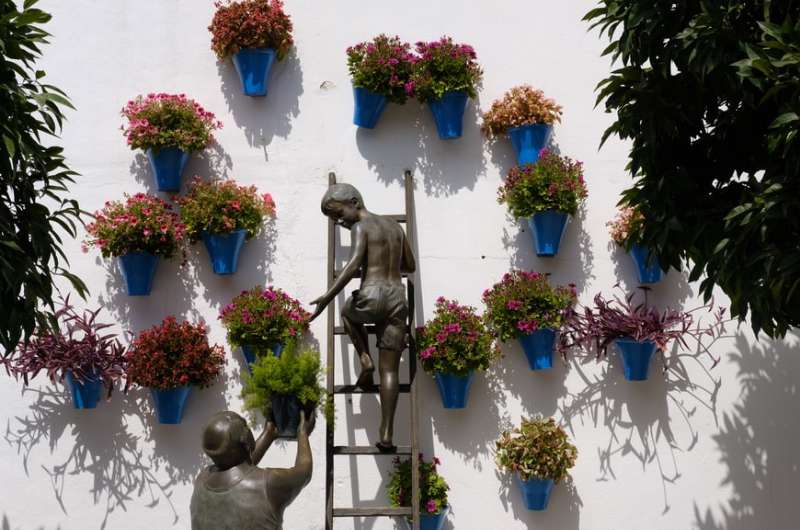
The patios are works of art!
For a less crazy experience that is available year-round, visit the Palacio de Viana. The palace has no less than 12 courtyards, all connected in a circular pattern. Each one if unique – there is for example the courtyard of oranges, the courtyard of Roman columns, silent courtyard or a courtyard of the cats! Get a map at the ticket office, it’s really informative.
It took 500 years to build the palace complex, so you can see the diversity and layers that kept being added on through time. It was inhabited by royal families until the late 20th century.
We only visited the patios, not the palace, but it is possible.
- Plaza de Don Gome, 2.
- Closed on Mondays. July and August: Tuesday to Sunday 9am—3pm. Other months: Tuesday to Saturday 10am—7pm. Sunday 10am—3pm.
- Tickets are €6 for just the patios, €10 for patios and palace. Wednesday afternoons are free (check the exact times, they change throughout the year).
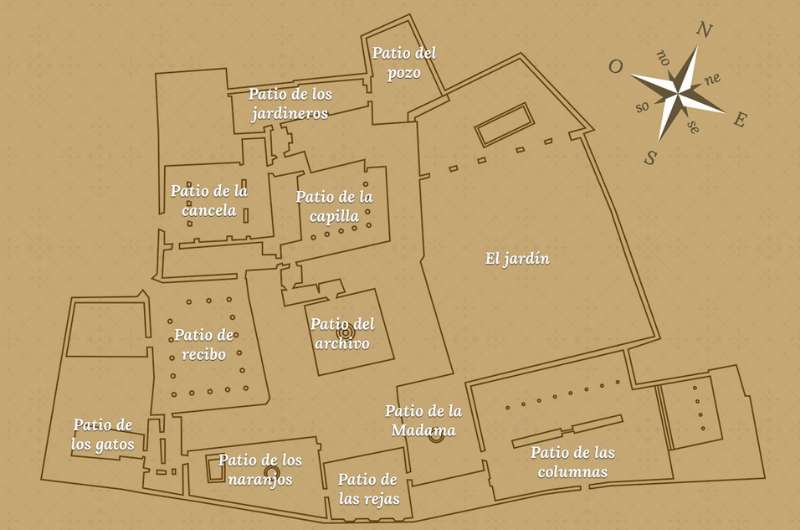
Map of the Palacio de Viana courtyards
Otherwise, just wander and peek into patios you pass by. The locals are proud of their patios and are usually happy to let you in and show you around. Just ask!
Tip: Not a patio per se, but stroll down Calleja de las Flores to get some nice photos. It’s not called flower alley by accident! There are numerous patios off of this little street that you can look into as well. The only downside is that this isn’t a secret location and everyone visiting Cordoba will be there sooner or later. Go early or late to beat the crowds.
6. The Alcazar de los Reyes Cristianos
The Palace of the Christian Kings. Honestly, I just want to say it is just another palace, like the numerous other palaces you will see in all other Andalusian cities. This one is not the most memorable one, but since you’re in town, you’ll take a look, right?
The gardens are the best part, so stick to those. There are orange trees and fountains as expected, and you can find shade under the lollipop-shaped treetops. Or maybe behind the corndog-shaped ones. It’s a nice and relaxing walk. Or go up the corner towers for some views of the city.
Besides being a residence for royals, it had other uses during the centuries, like an inquisition headquarters or a prison. Christopher Columbus planned his trip to Asia, erm America, here as well.
If you feel like you don’t need to visit another palace, you can skip it and not be sad. If you feel bad for being in Cordoba and not visiting the palace and still don’t want to go, there is a virtual tour of it available online. Two birds with one stone.
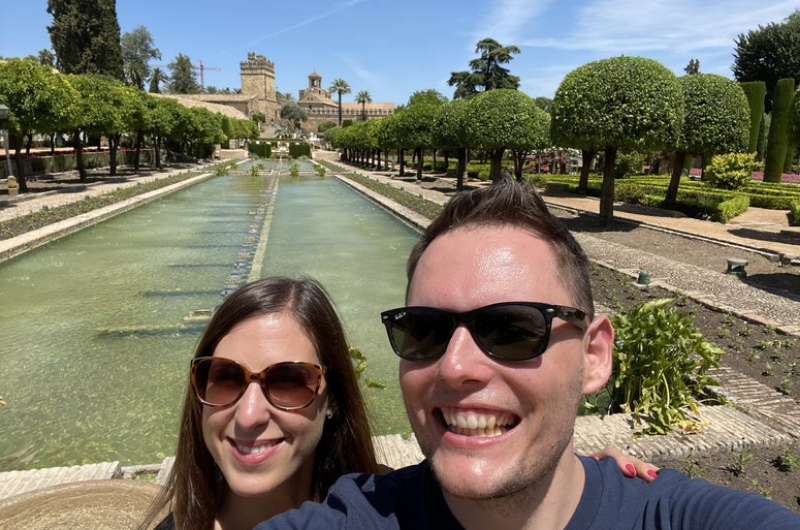
In the gardens of the Alcazar
Important: Getting in is a complete pain in the you know what. You wouldn’t know it from any website, but you have to register for a certain time slot and enter all your details. Make sure to have your ID and registration confirmation email at the entrance. Only then do you pay for your ticket, card only. Most people find this out after they get to the entrance, and some do get turned away. Otherwise they stand there frantically trying to register while standing in line (there is a QR code that you can scan at the entrance). Staff isn’t super helpful and mostly speaks no English.
The website you need to register through is here. Be sure to have you ID (fill it in in the “DNI” row). For phone number we just put our real one but some people claim they needed to put a Spanish one. Just make something up. Definitely add your real email though, because you will be sent a confirmation. You need that to get in.
There used to be a night show with lights and projections on the water, but that is now suspended until covid cools the duck down.
- Plaza Campo Santo de los Mártires, s/n
- Closed Mondays. Tuesday to Friday 8:15am—8pm. Saturday 9:30am—6pm. Sunday 8:45am—2:45pm
- Tickets cost €5
7. The Mosque-Cathedral of Cordoba
Also simply called the Mezquita for short, its Cordoba’s number one highlight and the reason you will decide to go there. Its real Christian name is Cathedral of Our Lady of the Assumption.
The Mosque was first built in the 8th century by the Muslim rulers of the time and was the second-largest mosque of its day. It was then expanded multiple times until the 10th century. The most decorated parts and the minaret (tower) were the last to be added.
After the Christian reconquest in the 13th century, the mosque was converted into a cathedral with almost no alterations. They threw out the Quran, added a Bible and called it a day. By some accounts, the Christians were so impressed by the mosque they didn’t want to destroy it, so they just kept it as is.
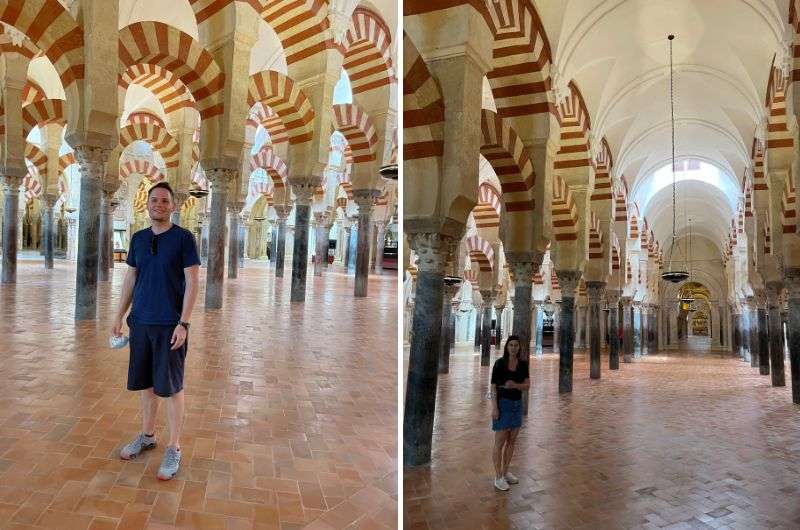
Obligatory pic with the arches of the Mezquita
It wasn’t until 300 years later that the most dominating Christian structure was added: the nave and the transept… that’s the large, church-looking part in the middle. The original mosque ceilings are not that high, so when you’re walking through the cathedral, you will instantly notice the difference when you enter and stand under the dome. The minaret was turned into a bell tower at about the same time.
Hotel tip: The wonderful Balcón de Córdoba is steps away from the Mezquita and will make your stay extra special. Sit on the rooftop terrace at night and admire the romantically lit up cityscape.
The Mezquita’s exterior isn’t especially pretty, it’s the interior that is worth seeing. It is a massive structure, though with over 800 columns with candy cane arches obstructing your view, you never get a “wow, this is huge!” feeling. But it is impressive, that’s for sure.
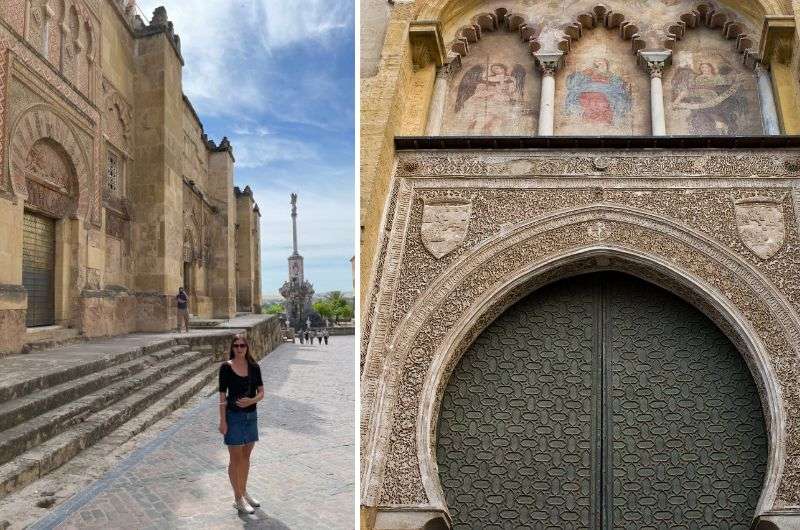
Karin with the Mezquita
Tip: If all this conversion talk is interesting to you, there is more information in our post about Seville, where the cathedral is also a former mosque. Also explained there is the difference between a church and a cathedral.
You can visit the Mezquita and the bell tower separately. Tickets can be bought on site or online. For the bell tower, since you go in as part of a group at a certain time, we recommend booking your time slot beforehand. For the Mezquita it is easy to just show up without a ticket.
To visit the bell tower, you have to follow a guide up and down the stairs, no individual entry is allowed.
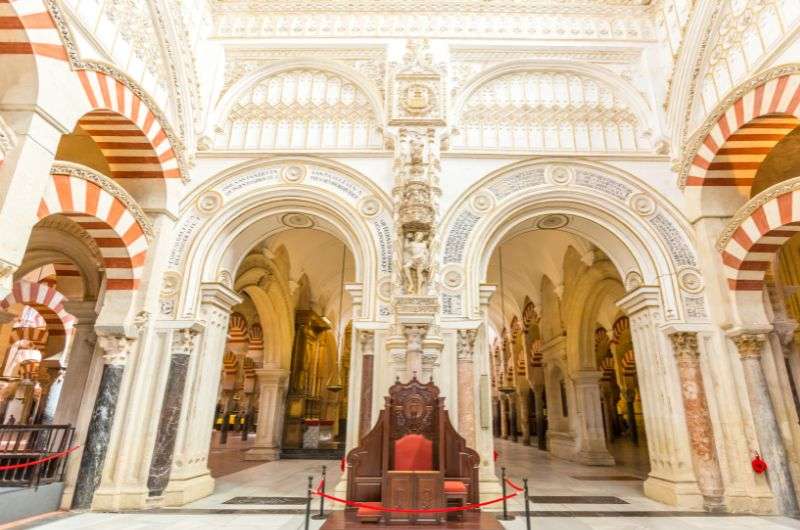
Where Islam and Christianity meet
There is also a night tour available that starts with a short movie in the garden and continues inside the Mezquita. We didn’t take this tour but being inside at night with the lights illuminating the columns must be pretty cool.
Important: You will not be allowed entrance into the Mezquita in the last hour of the opening times. Tickets are not sold in the last hour!
- Calle Cardenal Herrero, 1
- Mezquita: Monday to Friday 10am—2pm and 4pm—6pm. Saturday 10am—6pm. Sunday 8:30am—11:30am and 4pm—6pm. Times may vary in different parts of the year.
- Bell Tower: Monday to Saturday: 9:30am—5:30pm. Sunday 9:30am—11am and 12pm—5:30pm. Entrance every 30 minutes. Times may vary in different parts of the year.
- Tickets are €11 for the Mezquita and €3 for the bell tower. Night tour is €18.
What not to see in Cordoba
The one place I encourage you skip are the ruins of a Roman temple. If you walk past, like on the way to the Viano Palace, then by all means, take a look. But there isn’t much to look at and you will be disappointed if you expect anything more than a few reconstructed columns.
Now that you know where to go, why not take a moment to learn some facts about the city. I feel it always helps deepen our appreciation of each place we go.
History of Cordoba
Even though there were random settlements in the area even before, let’s start Cordoba’s history in 152 BCE (give or take a decade – sources can’t settle on one date) when it was conquered by the Romans. Cordoba then became the most important city in Spain thanks to its location on the Guadalquivir River. As a port city on a river that’s connected to the Atlantic, it was a big strategic deal for moving goods (like olive oil, wheat and wine) back to Rome.
The Roman Bridge comes from this period, though it was substantially renovated by the Moors in the 10th century.
Then came the Visigoths with their short and messy rule that isn’t worth talking about, and then the Moors. You can read a more detailed account of Andalusia’s history in this post.
Cordoba was the capital of Islamic Spain from 756 CE. A few years later, they started building the mosque, which was so incredible even the Christians refused to get rid of it when they took over. Instead, they built a church in the middle of it (more on that below).
In the 900s, Cordoba was the largest and most advanced city in Europe. During the time of Moorish rule, it was a place of great intellectual advancement, with some of the works in medicine and philosophy being groundbreaking at the time. Until the second half of the 900s, Christians, Jews and Muslims lived peacefully alongside each other.
Then came one Muslim on a power trip and all hell broke loose. Chancellor Al-Mansur inspired many uprisings and a civil war. In the end, King Ferdinand III swooped in and turned Cordoba Christian in 1236. He also turned the famous mosque Christian.
During the next centuries, Cordoba’s fame and fortune diminished. It had only 20,000 inhabitants in the 18th century, and until the industrial revolution in the 19th century, nothing much happened there.
Nowadays, Cordoba’s population is at about 350,000.
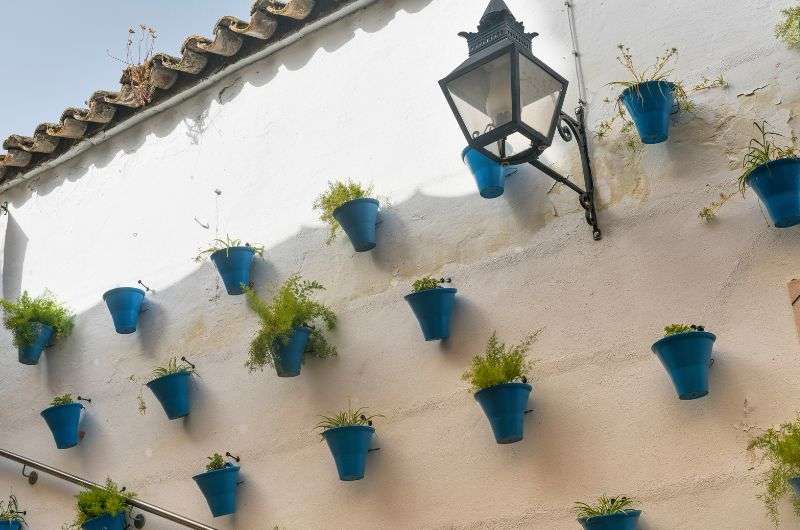
One of many patios in Cordoba
Not irreverent: A UNESCO record holder
Cordoba’s great and eventful history has helped it reach a present-day accomplishment: It’s the city with the most UNESCO World Heritage Sites in the world with a total of 4: the Mosque-Cathedral, the historic quarter surrounding the mosque-cathedral, the ruins of Medina Azahara that is out of town, and the Festival of the Patios.
That last one doesn’t come from very far back in history, it’s a tradition that only started in 1918, but it has been deemed so cool that is became an intangible UNESCO site.
You could also add on 2 inscriptions that Cordoba holds as part of the entire country of Spain: flamenco and the Mediterranean diet. Spain is actually in 4th place on the list of countries with the highest number of UNESCO sites in the world with 49 in total. It crosses the finish line without a medal after Italy, China and Germany.
Some random facts about Cordoba
- There are huge olive plantations around Cordoba.
- Cordoba is HOT in the summer. Temperatures reach over 104 °F (40 °C) in the summer every year. In 2017, a new record was set at 116 °F (47 °C). Rethink visiting in the height of summer! We visited in May and had to go sit in the AC in our car on multiple occasions just to survive. The mosque stays cool, so if all else fails, head there.
- If you dug straight towards the Earth core and out the other end, you’d end up in Hamilton, New Zealand. These two cities are almost exact antipodes. Why you want to know that, I don’t know, but I just found out that antipodes are a thing and wanted to share.
- The philosopher Seneca was born in Cordoba.
This post may contain affiliate links. We earn a small commission if you make bookings through my links, at no additional cost to you. This helps us keep this blog free, thank you!


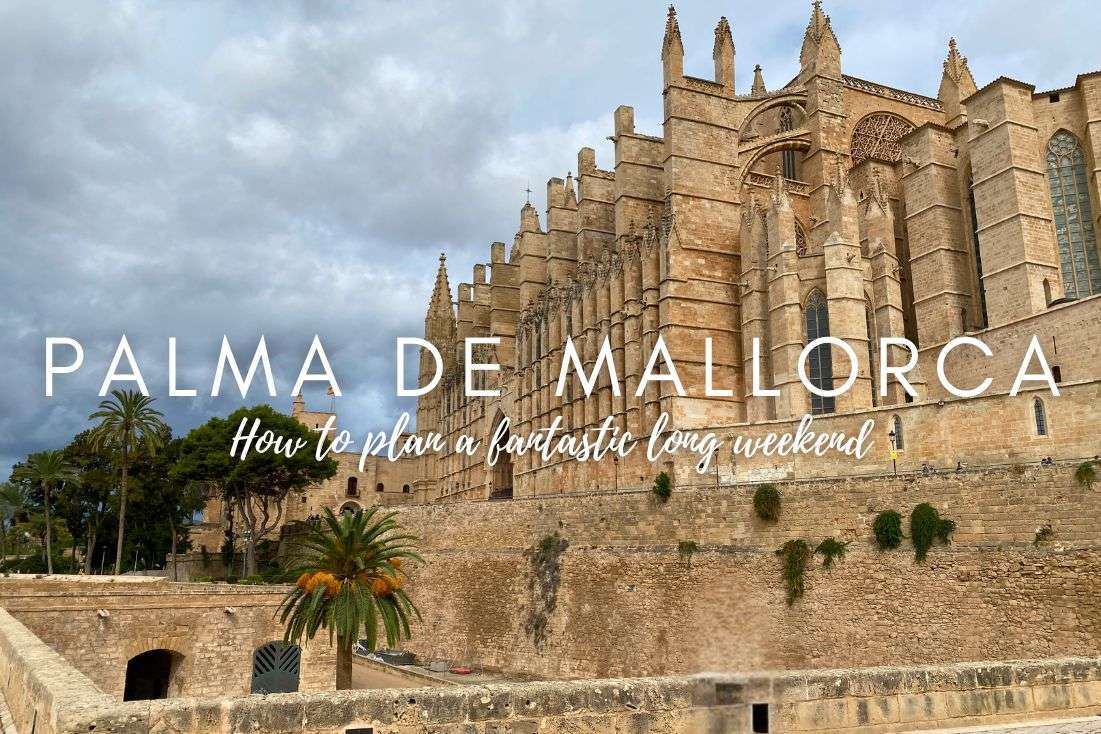
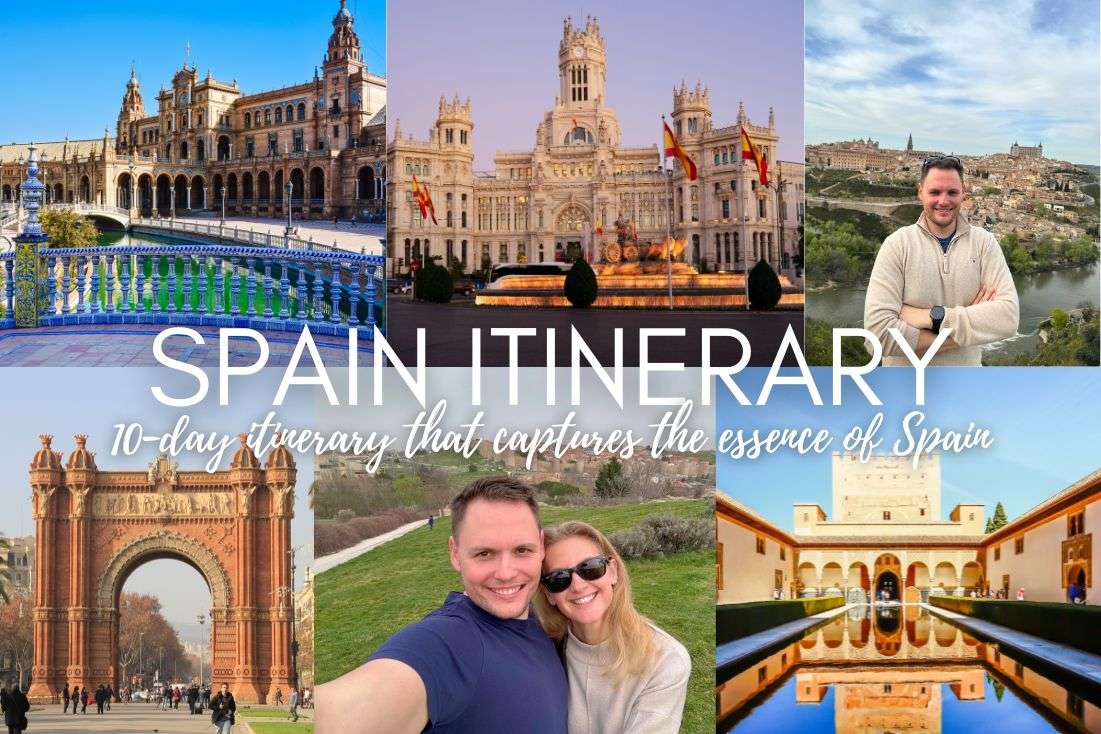
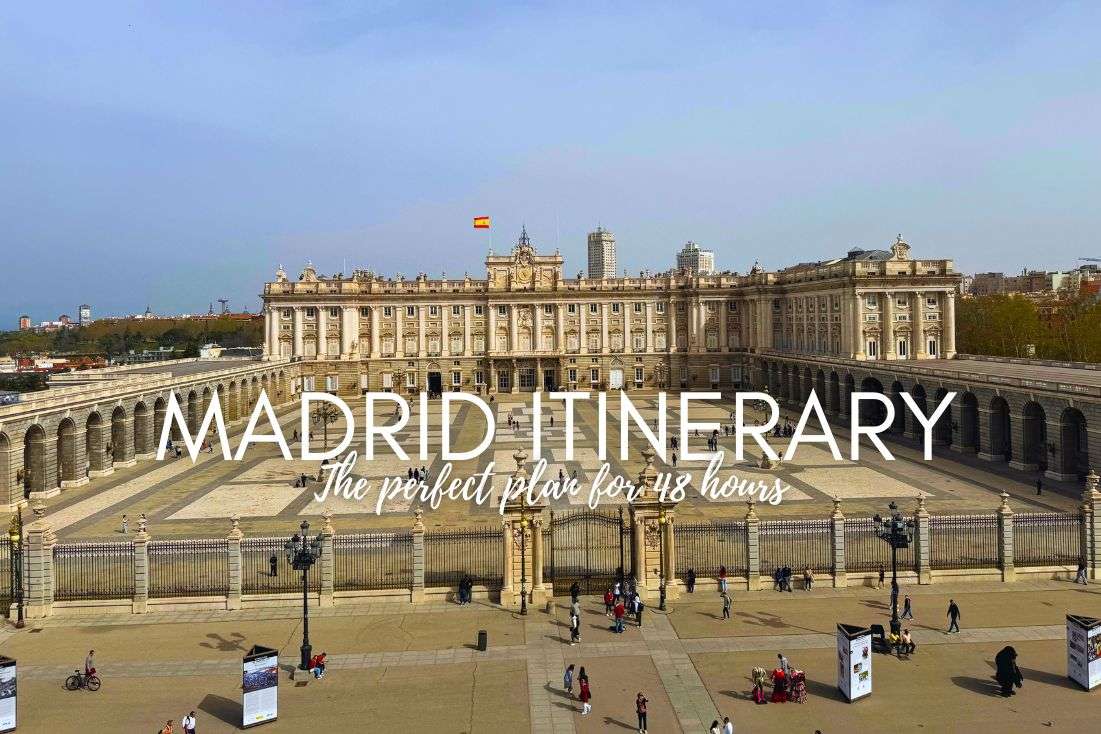





Comments | Thoughts? Give us a shout!